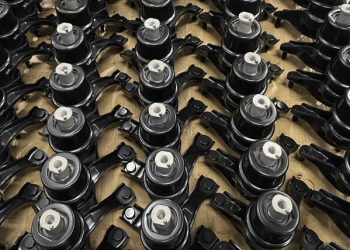Ten years ago, “advanced” air conditioning systems were considered a mandatory attribute of a cottage that claims a higher level of comfort. And when developing the engineering component of building projects, planners and designers were suggested to take care of installing climate control systems at the finishing stage. Moreover, the main thing they had to think about was masking the external and internal blocks so that they did not look like “stickers” on the facades and in the interiors of the rooms. However, the homeowners usually did not seek to mask the climate equipment: after all, a powerful external air conditioner unit was for them the same attribute of wealth as a satellite dish on the roof. Today, in the century of energy saving, a lot has changed.
Climate equipment market and seasonal factors
In our time, it is unfashionable to mindlessly waste energy sources, meanwhile, a classic air conditioner is one of the most “voracious” household consumers of electricity. As a result, during the last years, marked by a significant increase in energy prices, sales of air conditioning equipment for private homes in areas with a temperate climate have been steadily declining, and leading manufacturers of air conditioners have reduced supplies of equipment for domestic consumers and switched to the development of industrial systems – for commercial facilities, office and shopping centers.
True, in the abnormally hot summer of 2010, air-conditioning equipment was swept from suppliers’ warehouses in a matter of days. Temperature maxima were updated in many regions that year, which once again made users think about future global warming and tools to combat the scourge. But the “stellar time” did not happen for suppliers of household split systems: the following summer was not hot, so sales of equipment that cools the air in residential premises returned to normal. Moreover, this trend persists in European countries, and regions with tropical climates remain the main consumers of air conditioning systems nowadays.
However, the question of whether air conditioners are needed in a modern country house in the conditions of the middle lane remained open. The main disadvantages of modern climate technology are energy-consuming operation, as well as the high cost of installation and maintenance. However, it has undeniable advantages, as well as situations when you cannot do without an air conditioner.
In case of weather anomalies
No one believes in long-term weather forecasts in our region. But even in a cool summer, there are two or three weeks of heat, when the thermometer in the shade exceeds the thirty-degree mark and you want to be cool. At the same time, a country house with classic zoning, in which bedrooms and individual living rooms are located in attics, under the scorching sun with a roof, does not cope with the task of providing comfort on such days.
The fact is that a modern cottage that claims to be energy efficient is usually a hermetic structure. And in a democratic house, issues of heat preservation are often sacrificed to ventilation systems and comfortable air exchange. If the microclimate in the premises was not taken care of at the design stage, then you will have to think about installing an air conditioner. It can be a household split system, or a mobile air conditioner that does not require special installation (only a flexible duct leading to the apartment). A few years ago, the role of a “patch” in the climatic system of attic rooms was often performed by cheap window air conditioners (and in a country house, unlike a city apartment, it is usually possible to make a “special” window for such equipment). However, today such a decision does not make sense:
Comfortable weather in the house
The air conditioner has another useful property, which is manifested in a country house during the period of protracted autumn rains: it condenses moisture and allows you to quickly dry the room (this feature is well appreciated by car owners: it is worth turning on the “convey” in the car – and foggy windows become transparent almost immediately).
Everyone has long noticed that our houses are more often stuffy than hot. If at a sea resort at a temperature of 25-27 0 C, the movement of air masses usually creates a feeling of warmth and comfort, then the same temperature in a residential building creates a feeling of unbearable stuffiness. It is easier to deal with these feelings in a city apartment than in a cottage: just open the windows and doors and arrange a small draft. But in a country house (at the level of the first or second floors), air humidity is always higher than in a city apartment located in a “high-rise”.
Most modern air conditioners in the middle price category “know” not only how to cool the air, but also how to heat it. Therefore, many owners of country houses actively use air conditioners in the autumn period as well. However, it is expensive to use a classic air conditioner as a heater.
Smart climate management
In the modern concept of “climate in the house” management, climate technology is given an auxiliary role rather than the main one. But in some cases, installing an air conditioner is unavoidable. How it reduces the costs of its operation?
Designers, manufacturers of ventilation, kitchen remodeling contractors heating and home automation systems have their answers to this question. The task of the architect in this case is reduced to the correct orientation of the object on the cardinal points: he must take into account the norms of insolation and the possibility of natural shading of the premises.
Manufacturers of window systems recommend using solar visors and blinds as equipment that “helps” climate technology, and developers and integrators of automated building control systems – provide these elements of protection with control electric drives. In general, from the point of view of reasonable energy consumption, the situation when the premises are heated or cooled to a comfortable state “just in case” – suddenly someone comes or arrives – is not allowed luxury.
Climate control is one of the most important functions that is increasingly being delegated to the “smart house”. And if we are talking about a cottage, where heat losses are minimized due to high-quality construction and the use of energy-saving materials, automation that monitors the presence of a person allows you to reduce the cost of maintaining comfort by another 40-50%. At the expense of what is this achieved? Here is a typical case: it became hot indoors, and you turned on the air conditioner. Then, when the air conditioner has done its job, and you decide to warm up and turn on the “warm floor”: that’s how they work, fighting each other. Then you decide to ventilate the room and open the window… There will be no winner in such an eternal “war between cold and heat”, but there will always be a loser – the wallet of the homeowner.
Therefore, the main task of designers and developers of home climate control systems is to prevent such conflicts.
Air conditioning is the opposite
For buildings with a claim to energy saving, developers offer many options for cooling and heating: ventilation systems with heat recovery, heat pumps with a ground heat exchanger or ground heat accumulators.
In essence, the modern version of an air conditioner is an “air conditioner in reverse”: an air-to-air heat pump. In the summer, it works like a regular air conditioner, and in the heating season, it allows you to use portable heaters from the street to heat the premises. But such a heat pump in our climatic zone can be used mainly as an auxiliary source of heat, which allows you to reduce heating costs in the off-season. At the same time, the prices of air heat pumps for private houses can be compared with the cost of industrial air conditioners.






